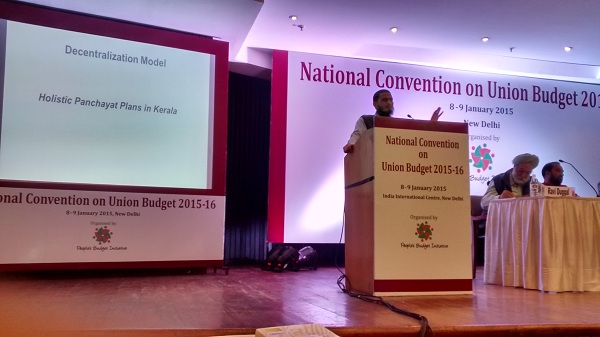
Asadullah of Educational Consultants India Limited, Delhi) making a PPT presentation entitled “What’s Working Well in Public Provisioning, Where and Why?” The session was chaired by Tejinder Sandhu (UNICEF India) while other panellists were Joe Madiath (Gram Vikas, Odisha)”; Reetika Khera (Indian Institute of Technology, Delhi) and Ravi Duggal (International Budget Partnership).
By Pervez Bari
New Delhi: Civil Society Organizations (CSOs), across India have joined hands to prepare a document – Policy Asks (Charter of demands) – urging the Union Government to take into account some of the major concerns across a range of sectors that have a direct bearing on the lives of the poor and underprivileged sections – such as women, children, Dalits, Adivasis, Muslims and persons with disabilities – while shaping the country’s fiscal policy over the coming years.
The Policy Asks have been compiled by CSOs taking into account both substantive work towards assessing budgets (at the national and sub-national level) from the perspective of the vulnerable sections and the inputs from a large number of CSOs that have been working on development issues at the grassroots level.
“We hope the Union Ministry of Finance and the other Union Ministries would consider some of these expectations in shaping their budgetary policy priorities this year as well as in the coming years,” the CSOs said at the end of the two-day national convention on Union Budget 2015-16 held here on January 8 & 9.

Ravi Duggal of Washington-based International Budget Partnership making a point while chairing a session of Health as panellists Abhay Shukla (SATHI, Maharashtra) and Devkant Tripathi (Sanket, Madhya Pradesh) look on
The convention discussed in detail important processes relating to government budgets in India, which have been constrained by some of the widely-acknowledged challenges in governance in the country. These challenges pertain to lack of adequate transparency in governance, limited space for public participation in processes of priority setting, and weak mechanisms of accountability of government staff.
The civil society budget groups from across the country, collectively as a network called People’s Budget Initiative (PBI), under the aegis of Centre for Budget and Governance Accountability (CBGA), deliberated the issues pertaining to the Union Budget wherein top economists, social activists, journalists etc. participated as panellists in 21 sessions spread over two days to lend in the their expert advice.
The PBI in collaboration with CBGA had submitted earlier to the Union Ministry of Finance a number of Policy Asks and expectations across a range of sectors. After this two-day convention, a revised abridged version of Policy Asks highlighting the most important points would be re-submitted to the Union Ministry of Finance for consideration to be included in the Union Budget 2015-16.
The Convention also discussed that the fiscal policy strategies for social inclusion such as Scheduled Caste Sub Plan (SCSP), Tribal Sub Plan (TSP), Prime Minister’s 15 Point Programme for Minorities and Gender Responsive Budgeting (GRB), have not influenced planning or budgeting in a significant way. Instead, most of these strategies have influenced mainly the reporting of some of the allocations and expenditures in the budget documents.
In order to address this major gap, the organizers claimed, there is a need to promote redesigning of the fiscal policy strategies for vulnerable sections so as to ensure that – the processes of planning and budgeting incorporate special or additional measures to address specific needs and challenges confronting the different vulnerable sections (such as, women, children, Dalits, Adivasis, Muslims and persons with disabilities); adequate budgetary resources are provided for such special or additional measures; and only such relevant allocations (focusing on the specific vulnerable sections) are reported under SCSP, TSP and GRB etc.
It may be mentioned here that the PBI in collaboration with CBGA in order to beat the short deadline of January 2, 2015 had submitted earlier to the Union Ministry of Finance a number of Policy Asks (Charter of demands) and expectations across a range of sectors having a direct bearing on the lives of the poor and the underprivileged sections of the population. These 129-pages Policy Asks had been compiled by a group of civil society organisations, (CSOs), which are part of the network, taking into account both their substantive work towards assessing budgets from the perspective of the vulnerable sections and the inputs from a large number of CSOs working on development issues at the grassroots level.
Thereafter, now a revised abridged version of Policy Asks highlighting the most important points would be re-submitted to the Union Ministry of Finance for consideration to be included in the Union Budget 2015-16.
Earlier, at the outset Subrat Das, Executive Director of CBGA threw light on the aims and objects of the convention. The opening session titled “Budgetary Policies, Institutions and Processes: Continuity and Change” was chaired by Vinod Vyasulu (Centre for Budget and Policy Studies, Karnataka). The panellists were Abhijit Sen (Jawaharlal Nehru University, Delhi) and Anuradha Balaram(Kerala State Planning Board).
This was followed by breakout sessions on ‘Expectations from the Union Budget 2015-16’ wherein there were five parallel sessions with three at a time encompassing 15 topics on the first day. These sessions were: Education; Drinking Water & Sanitation; Climate Change; Health; Agriculture & Food Security; Urban Poor; Rural Development; Muslims; Persons with Disabilities; Adivasis; Dalits; Unorganised Workers; Children; Women and Budget Transparency.
Meanwhile, on the second day, five sessions were held. Apart from the plenary session, which saw reporting from the breakout sessions on the previous day, the other session was held on ‘What’s Working Well in Public Provisioning, Where and Why?’; ‘Taxation Policies: Who funds our government?’ and ‘Black Money: Looking beyond the obvious’. The last session of the day was on ‘Translating the Asks into Action: Open Discussion’, which was moderated by Amitabh Behar (National Foundation for India, Delhi).
Meanwhile, the summary of Policy Asks for the Union Budget 2015-16 is as follows:-
Education: The guidelines for formulation of Annual Work Plan and Budget (AWP&B) documents in Sarva Shiksha Abhiyan (SSA), should be strictly followed to make this process decentralised starting at School Management Committee level and moving upwards to the block, district, State levels and the national level. CAG has pointed out that the poor quality of AWP&B is reflected in poor performance of the scheme.
It is of utmost importance that financial transparency in SSA is improved through providing information in public domain on: (i) flow of SSA funds from State Treasury to SSA implementing society; (ii) timely uploading of procurement plan on website and (iii) strengthening of Management Information System (MIS). Further, timely distribution of SSA funds among States is needed to maintain the quality of expenditure and avoid ‘rush of funds’ towards the end of the fiscal year.
At present there is a shortage of 9.4 lakh teachers in government schools. Budgetary allocation should be enhanced for recruitment of trained and qualified teachers to meet the provisioning of RTE Act, 2009, across the country.
Drinking Water & Sanitation: Under the Swachh Bharat Abhiyan (SBA), unit cost of Individual Household Latrine (IHHL) is proposed at Rs.12,000 in rural areas and Rs.5,333 in urban areas. The unit cost is quite low and needs to be revised. Allocate budgetary provisions for operation and maintenance of public toilets and community sanitary complexes.
According to Census 2011, 56.5 percent of the households in India access water from well, hand pump and other sources. Only 18 percent of rural and 62 percent of urban population have access to treated tap water. Higher budgetary allocation is needed to improve access to treated water supply in the country.
Also, the Government should increase budgetary allocation for Information, Education and Communication (IEC) component of SBA, as it is an important intervention to bring changes in people’s behaviour towards hygiene. Recruit human resources with different expertise and increase the skills and capacities of existing staff.
Climate Change: There is a need to increase the corpus and broaden the scope of the National Adaptation Fund. The fund can be instrumental in financing India’s adaptation and resilience building initiatives across ministries, instead of limiting its scope to a few core ‘adaptation’ projects.
The share of the Ministry of New and Renewable Energy in National Clean Energy Fund transfers has declined from 80 percent in 2013-14 to 34 percent in 2014-15. Resources should be prioritised for development of renewable energy.
Renewable Energy can be harnessed as a locally available and scalable resource in the rural areas in India. Budget allocation for off-grid applications of renewable energy with installation of micro-grids should be increased. There is also a need to appropriately enhance budget allocations to pace up the Transmission and Distribution infrastructure with growing RE capacity additions.
Health: At the beginning of the 12th Five Year Plan (FYP), there was a huge shortage of human resources in the health sector; shortage of doctors and nurses amounted to about 76 percent and 52 percent respectively. Adequate budgetary provision for trained health personnel along with expansion of quality infrastructure is imperative for improving the coverage and quality of services in health sector. Compulsory public service by all medical and nursing graduates for at least three years may be introduced to tackle shortage of health personnel in the country. The Employee’s State Insurance Scheme (ESIS) may be merged with general health services in order to optimally utilise the existing infrastructure. Further, the pilot schemes under the Universal Health Care (UHC), proposed in the 12th FYP should be implemented across the country with adequate budgetary support.
It has been estimated that Out of Pocket (OOP), expenditure in India was around 2 percent of GDP and 58 percent of the total health expenditure in 2012. Around 60 percent of OOP expenditure in the country is on medicines. Thus, ensuring access to affordable medicines should be a priority in the Union Budget 2015-16.
The Maternal Mortality Ratio (MMR) stands at 178 per 1,00,000 live births in 2010-12. Thus, there is an urgent need to increase allocation towards maternal health programmes. Also, scheme-wise detailed reporting covering different social groups is imperative to understand and critically assess the outreach of maternal health budget.
Agriculture: Agricultural research has a vital role in agricultural transformation and in reducing hunger and poverty. The 12th FYP has stressed the need to enhance spending on National Agricultural Research System (NARS) and proposed an annual average spending of 1 percent of agricultural GDP by the end of the Plan period. Budget provision for agriculture education and research should be enhanced in the Union Budget 2015-16 so that the average spending under this head could meet the 12th FYP target.
Agriculture production in India is vulnerable to sharp fluctuations in weather, pest attacks and crop diseases. The small and marginal farmers are the worst affected and crop insurance could provide a crucial cover against such vulnerabilities. Hence, crop insurance should be extended to all farmers, covering all crops.
Implementation of Rashtriya Krishi Vikas Yojana (RKVY), with adequate flexibility given to States to articulate local needs for the sector, has had an important role in the improved performance of agricultural sector in the past few years. However, inadequate human resources and lack of proper monitoring mechanisms are some of the major problems in implementation of this scheme. Higher budgetary allocation for strengthening the institutional mechanism under RKVY is needed for better utilisation of funds.
National Mission for Sustainable Agriculture (NMSA) which aims at transforming Indian agriculture into a climate-resilient production system became a part of the originally conceived National Action Plan on Climate Change (NAPCC). For undertaking interventions to address issues on climate change, water conservation, water management and water efficiency, soil fertility and sustainability of natural resource use, budgetary allocation under NMSA should be increased substantially.
Urban Poor: According to Census 2011, there are 13.7 million slum households in India. To meet the huge demand and supply gap for affordable houses for urban poor, the budgetary allocation for Rajiv Awas Yojana (RAY) should be increased. The unit costs also need to be raised in RAY to improve the quality of houses being constructed.
Besides providing adequate resources to address basic needs of the urban poor like housing, drinking water and sanitation, education and health, there is also a need for a comprehensive social security system to address the vulnerabilities of urban poor. Also, there is a need to conduct a national urban BPL survey to capture the extent of urban poverty with its multidimensional character. This will also be instrumental in policy formulation for the urban poor.
Rural Development: With an outlay of Rs.33,000 crore in 2013-14, MGNREGA provided employment to 4.8 crore households. According to NSSO data, 19 percent of the total rural households sought work but did not get employment under this programme. Allocations under the MGNREGA over the past few years have remained stagnant and hence should be increased in Union Budget 2015-16.
It was also reported that unpaid wages under MGNREGA in 2013-14 were Rs. 4,800 crore. Timely payment of wages is necessary to keep the scheme effective, as it is essentially a demand driven scheme. Another concern is the discrepancy in the data available on MGNREGA in the MIS. This data discrepancy should be addressed.
BRGF was launched in 2007 as an area development programme in 272 backward districts to bridge the regional imbalances in development. The Second Administrative Reform Commission found that the approach of taking district as the unit of planning, implementation and monitoring has not been able to address the regional imbalances; hence BRGF should be implemented at the block level.
Muslims: Increase the budget allocation for the Ministry of Minority Affairs to cater to the multitude of developmental deficits confronting minorities across sectors. Budgetary allocations and unit costs of scholarships need to be enhanced, at least to the levels of the scholarships for Scheduled Castes and Scheduled Tribes; application procedures should be simplified.
Introduce a budget statement to capture fund allocations for the welfare of minorities in all programmes and schemes covered in the PM’s New 15 Point Programme. Annual Action Plans should be prepared taking into account the specific challenges confronting Muslims. Earmark budgetary allocations for promoting financial literacy and ensuring inclusion of Muslims in access to credit. Allocate budgetary resources for skill development, training and entrepreneurship development among Muslims and other minorities, with provision for creation of an e-Commerce Platform.
Persons with Disabilities: Introduce a separate budget statement for allocations made for promoting the rights of persons with disabilities across ministries. All ministries should report sex disaggregated data − both physical and financial − on the coverage of persons with disabilities.
Further, there is a need to ensure inclusive education for children with special needs by providing optimal infrastructural facilities, curriculum modification and educational aids/study materials.
The scope of Scheme for Implementation of Persons with Disabilities Act and Assistance to Disabled Persons for Purchase/Fitting of Appliances programmes must be expanded to fulfil the mandate for ensuring effective participation and inclusion of all persons with disabilities. Also, there is a need to set up rehabilitation centres in each district to provide extension services in rehabilitation and encourage community based rehabilitation for Persons with Disability.
Unorganised Workers: The government should increase budgetary allocations for enhancing the overall social security coverage for unorganised workers, including the amount provisioned under the National Old Age Pension Scheme. There is a need for inclusion of MGNREGA workers under various existing social security provisioning of the government.
There is a need to create and strengthen institutional mechanisms for enhancing safety and social security of unorganised workers by (i) establishing Worker ‘Support Centres’ in major cities and industrial centres to provide counselling on various issues; (ii) setting up a phone based centralised labour helpline for workers in distress and (iii) strengthening of labour departments of the State Governments and addressing the shortage of human resources.
Women: Strengthen interventions to address violence against women through (i) operationalisation of Nirbhaya Fund; (ii) increase in allocations for schemes for rescue, relief and rehabilitation of the victims of violence and abuse; and (iii) adequate resources for implementation of women related legislations.
To address women’s health and nutritional concerns, (i) extend coverage of IGMSY to all pregnant and lactating women, (ii) scale up SABLA, (iii) include provisions for training of attendants to make childbirth safer for women who deliver at home and (iv) carry out a vulnerability mapping of occupational health issues faced by women workers in the unorganized sector.
In addition, there is a need to increase women’s employment and ensure wage parity by (i) linking agricultural schemes and subsidies to women farmers; (ii) providing equal opportunities to women in the manufacturing sector and (iii) adopting measures to promote pay equity and social security benefits for women workers.
There is a need to redesign the format of the Gender Budget Statement to make it effective. The format of the Gender Budget Statement should require ministries to report the specific measures that they have taken to engender their schemes and the budgetary allocations for these measures. This Statement should capture both quantitative as well as qualitative information regarding the interventions by the various ministries. An alternative format for redesigning the Gender Budget Statement has been suggested in the respective section.
Children: The outcome indicators for children show huge deficiencies at present. There is an urgent need to increase the allocations under different child welfare programmes to improve the existing situation. Children are vulnerable to different types of violence, exploitation and abuse. The Government should provide higher allocations for universalising Integrated Child Protection Scheme in all districts with adequate infrastructure and human resources.
Restructured ICDS needs additional investments to strengthen the services, bring in its fold the under-served children (migrants, transients, tribal settlements etc.) and meet other challenges being faced in its expansion phase. Funds need to be allocated in line with the requirement of ICDS Mission Mode document that has estimated a requirement of Rs. 28,454 crore for 2015-16.
All major children’s schemes report underutilisation of allocated funds, which hampers achievement of goals and objectives, thereby rendering the schemes less effective. Timely disbursement of funds would be an important step to correct this problem.
Scheduled Castes: It is imperative to ensure effective implementation of the Scheduled Caste Sub Plan (SCSP) by (i) enacting legislation; (ii) ensuring needs-based planning; (iii) integrating concerns of Dalit women in schemes under SCSP; (iv) setting up nodal units for operationalising SCSP in each ministry; (v) improving design/format of Statement 21 (in Expenditure Budget Vol. I) and (vi) adopting good practices being followed in some of the States.
Crimes against Dalits, especially women, assume a dual nature of being both sexual as well as caste-based, and are reported across the country. Therefore, there is a need to increase the budgetary outlays for implementation of Prevention of Atrocities Act (1989), along with ensuring that requisite provisions under the Act are being implemented by the States. Education indicators for Dalits remain far below those of the general population. The budgetary allocations for Pre-matric and Post-matric scholarships should, thus, be enhanced to increase the coverage and access.
Scheduled Tribes: There is an urgent need to ensure effective implementation of the Tribal Sub Plan (TSP) by (i) enacting legislation; (ii) ensuring needs-based planning; (iii) integrating concerns of tribal women in schemes under TSP; (iv) setting up nodal units for operationalising TSP in each ministry; (v) improving design/format of Statement 21A (in Expenditure Budget Vol. I) and (vi) adopting good practices being followed in some of the States.
In addition, there is a need to address the problem of staff shortage in tribal/scheduled areas to improve the implementation of schemes. The Government should introduce and strengthen measures for improving the nutritional status of tribal children and pregnant and lactating women by (i) introducing flexibility and higher unit costs in existing schemes; (ii) adopting good practices being followed in some States to provide supplementary nutrition and (iii) introducing nutrition related schemes for tribals.
Food & Nutrition Security: India has a high proportion of underweight children of less than five years of age. This not only affects the physical health of children but also affects their cognitive growth. To ensure food and nutritional security, the National Food Security Act should be rolled out immediately by the Government along with the components of ICDS, Mid-Day Meal and Maternity entitlements in the Act. Also, provisioning of eggs for children in Mid-Day Meal and ICDS schemes should be ensured. The Act should be expanded to include pulses and edible oils so as to address the issue of nutritional security, while universalising the provisioning instead of targeting.
A decentralised system must be implemented across the domains of foodgrains procurement, storage and distribution. Storage facility must be created at the level of Gram Panchayats and Community Food Grains Banks should be established; for this adequate budget allocations must be made on a priority basis.
Taxation: The magnitude of tax revenue forgone due to exemptions/deductions/incentives in the Central Government tax system is estimated at Rs.5,72,923 crore in 2013-14, which is 5 percent of country’s GDP. A review of tax exemptions is needed to assess their social and economic justification.
There is a need to withdraw exemption of Long Term Capital Gains Tax on securities and introduce a tax on Short Term Capital Gains on securities as a regular income, as the loss from these exemptions if far more than the income generated.
India has a very narrowly defined and non-progressive wealth tax structure. This has resulted in high wealth and income inequality in the country. A progressive wealth tax structure would not only increase tax collection but also make the society more egalitarian. Similarly, inheritance tax should be reintroduced to counteract wealth accumulation across generations. Further, a comprehensive review of all Double Taxation Avoidance Agreements is required in view of the concerns of round tripping and revenue losses due to their misuse.
India has one of the most under-resourced and understaffed revenue bodies in proportion to the size of the population. The staff shortage across various agencies such as CBDT, ED, FIU, CBEC etc. has been estimated to be 30,000. Accordingly, the human resources in tax administration need to be strengthened.
Budget Transparency: In order to facilitate a better assessment of the progressivity of the country’s tax system, the Finance Ministry should revive publishing of (i) All India Income Statistics (AIITS) and (ii) commodity-wise break up of indirect taxes. This could lead to policy measures for better coverage of the potential direct taxpayers base and better compliance and monitoring of tax evaders.
All Union Government Ministries should upload their Detailed Demands for Grants, Outcome Budget documents and Result Framework Documents for the last ten years on their respective websites and update the same every year.
Union Budget documents by the Finance Ministry should provide information on State-wise break-up of the allocations and expenditures for various Central Schemes.
Improve reporting on implementation of budgetary strategies for disadvantaged sections:
- Introduce a statement on fund allocations for the welfare of minorities in all programmes and schemes covered in the Prime Minister’s New 15-Point Programme; •Introduce a statement on budgetary provisions for the development of Persons with Disabilities; • Improve the format of the Statements on budgetary provisions for the development of Scheduled Castes and Scheduled Tribes by providing additional information; and • To strengthen the implementation of Gender Responsive Budgeting, redesign the Gender Budget Statement. (pervezbari@eth.net)

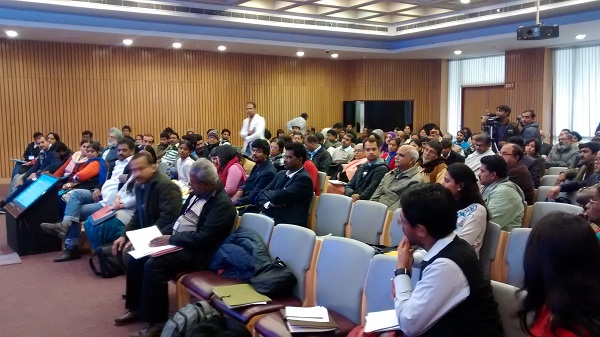
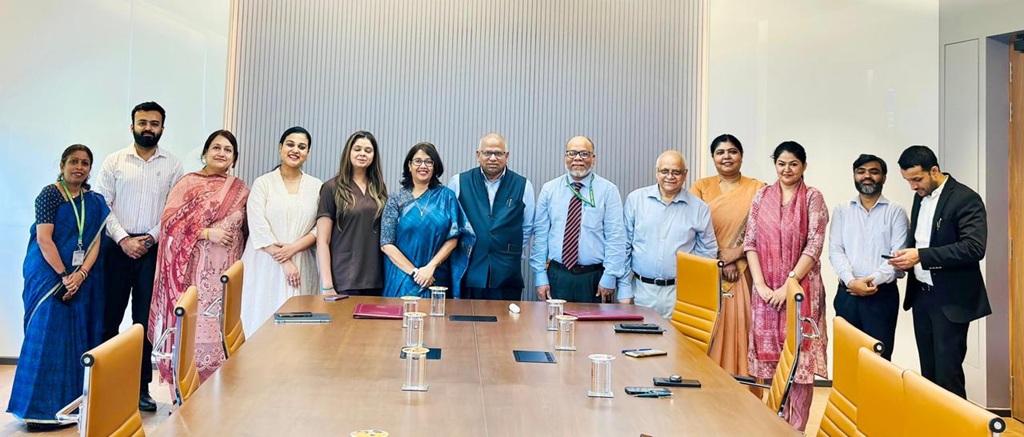
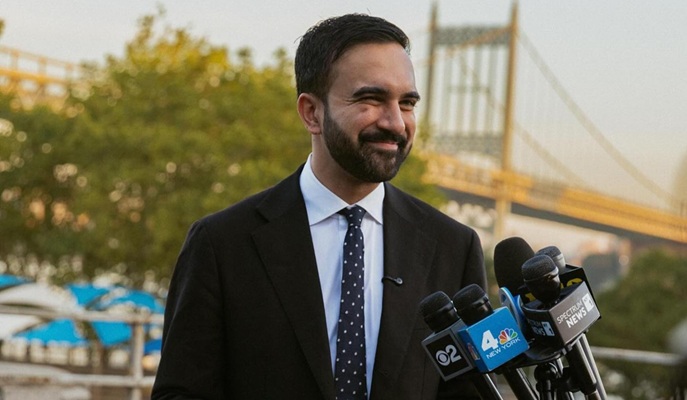

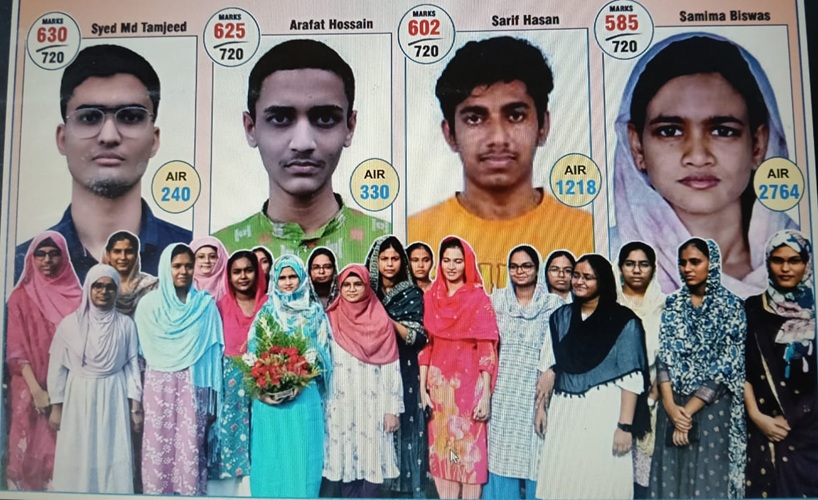
0 Comments